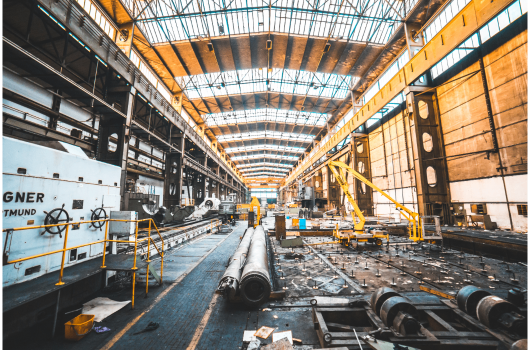Industry fell by 2.7% yoy in March
Economic commentary by Jakub Seidler, Chief Economist of the CBA

Industrial production disappointed significantly in March, falling by 2.7% year-on-year, while the analysts' consensus, according to Reuters, expected a slight decline of 0.5% (Chart 1). On a month-on-month basis, output also fell by a strong 1.6%. The main reason for the weak March figures is linked to weaker car production, where the year-on-year decline of almost 6% was amplified by the higher comparison base from last year. New orders also slowed after an upbeat February and domestic ones even fell. The end of the first quarter from the industry's point of view was thus well below expectations; on the other hand, calendar effects and the overlap of the Easter holidays already into March also played a role. March had 3 fewer working days this year than last year, and although the above figures are adjusted for these effects (without adjustment, the industry fell by 11% year-on-year in March), this is only an estimate. Just as there was no need to overestimate the one-off positive figures from February, there is no need to draw strong conclusions from the worse March figures. For the full year 2023, the industry declined by 0.8% (after revision); for this year, the economists' consensus expects industry growth of around 1.6%.
On a month-on-month basis (seasonally adjusted), the industry declined by a strong 1.6%, while it grew by 2.2% in February. The automotive sector was the biggest contributor to the decline, with production falling by 2.4% month-on-month (it had risen by 6% in February), but there were also strong declines in machinery (-4.5%) and metal structures and basic metals. On the other hand, the production of electrical equipment and computers grew slightly.
On a year-on-year basis, the industry fell by 2.7%, but this is a calendar-adjusted figure; without adjustment, the decline would have been 11% due to fewer working days. The most significant contribution to the decline was driven by machinery and equipment manufacturing, but also by car manufacturing, which fell by almost 6% year-on-year in March after a 9% rise in February (Chart 3). Its significant decline was amplified by the high comparison base from last year. On a quarter-on-quarter basis, industrial production fell by 0.8%, while it had risen by 2% in the previous quarter.
New orders slowed in March and, in the case of domestic ones, fell slightly on an annual basis. After February's positive figures, the picture has deteriorated slightly in this respect as well.On the other hand, new orders in the automotive sector continue to grow by a strong 20% yoy and foreign ones by almost 30%, while domestic ones have slowed down noticeably (Chart 3).
Thus, while the March industrial figures were disappointing, on the other hand, this March was specifically influenced by Easter and the cleaning of these calendar phenomena is not perfect. The weak March figures should therefore be taken with some caution, although it is true that the situation in domestic industry did not improve as quickly during the first quarter as some leading indicators had suggested. Less optimistic are the new April PMIs, which have fallen again, signalling a further decline in demand and production, both in domestic industry and in Germany (Graph 4), and this year's industrial recovery will thus be rather fragile.